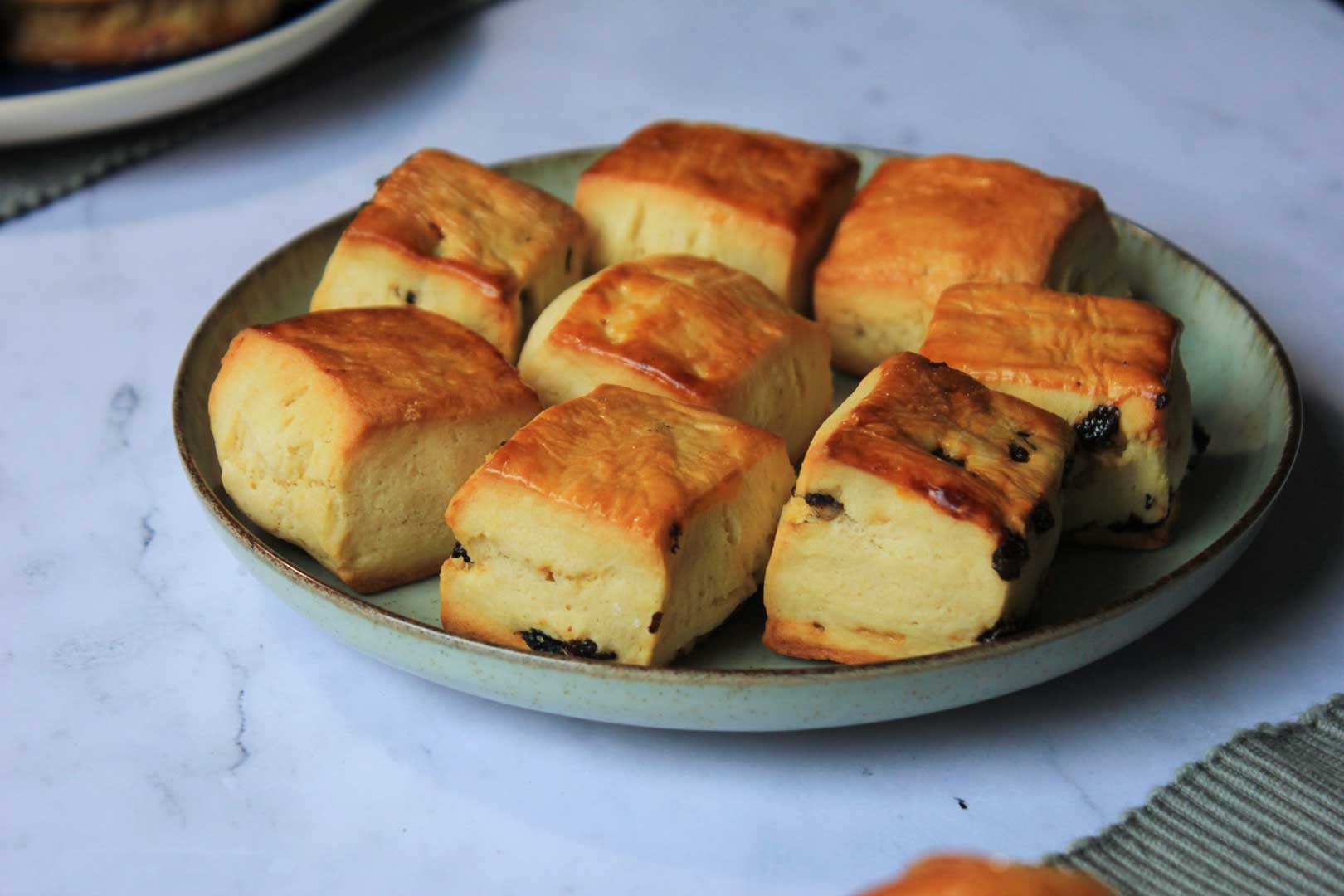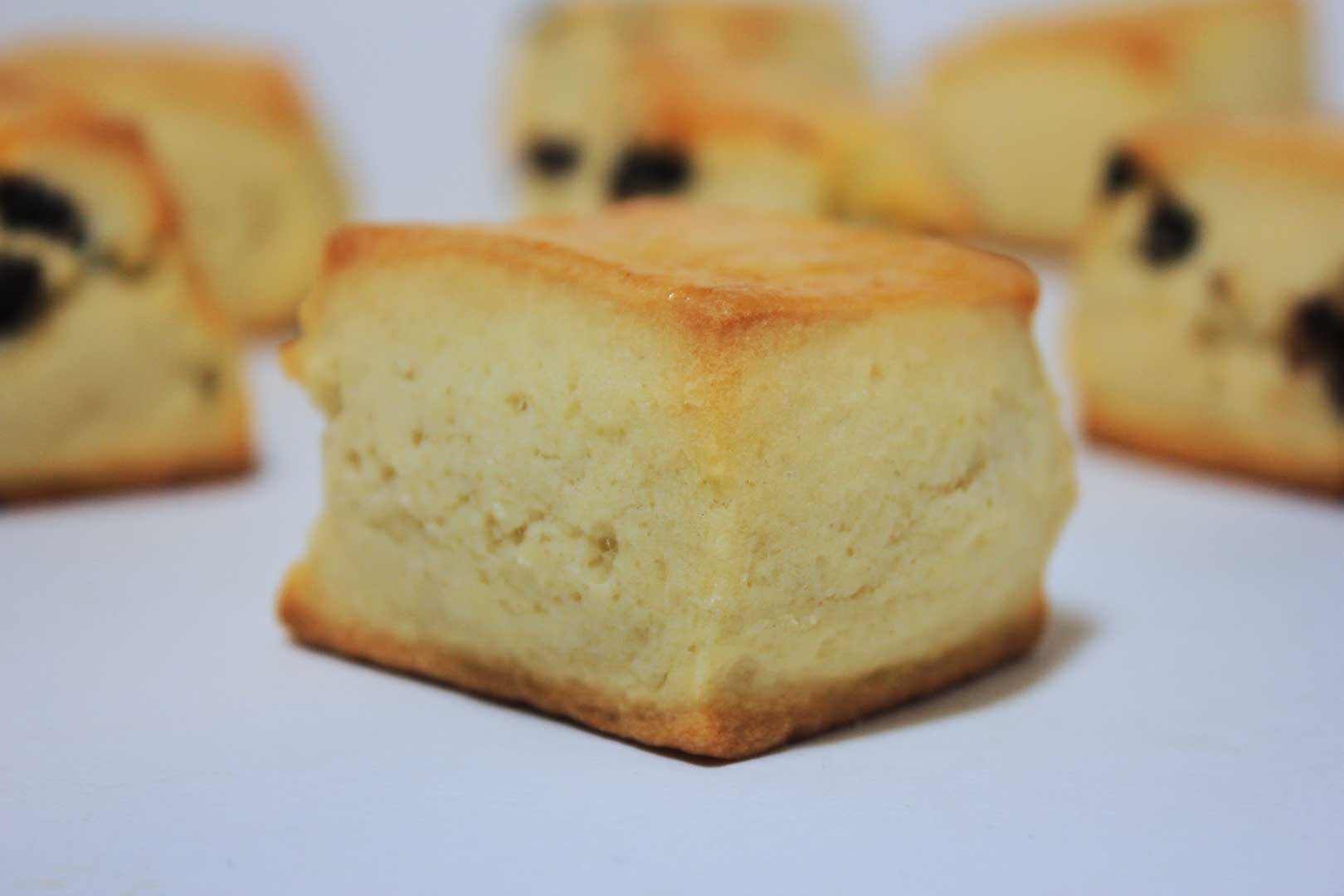Products
Classic mini-scone



Scone originated from Scotland in the early 1500s and the first known reference was made by a Scottish poet in 1513. The word probably comes from the Dutch “schoonbrot”, meaning fine white bread, and the closely-related German “sconbrot”, which means fine or beautiful bread. Is it a cake? A pastry? A biscuit? Or bread, as its origin suggests it? Hard to say, as scone has a unique texture which is entirely its own!
The best way to enjoy it is with jam and clotted cream.
Ingredients
- Flour T45
- Butter
- Sugar
- Eggs
- Cream
- Salt
- Baking powder
Contains gluten, dairy and eggs. May contain traces of nuts and sesame.
£1.10
Related products